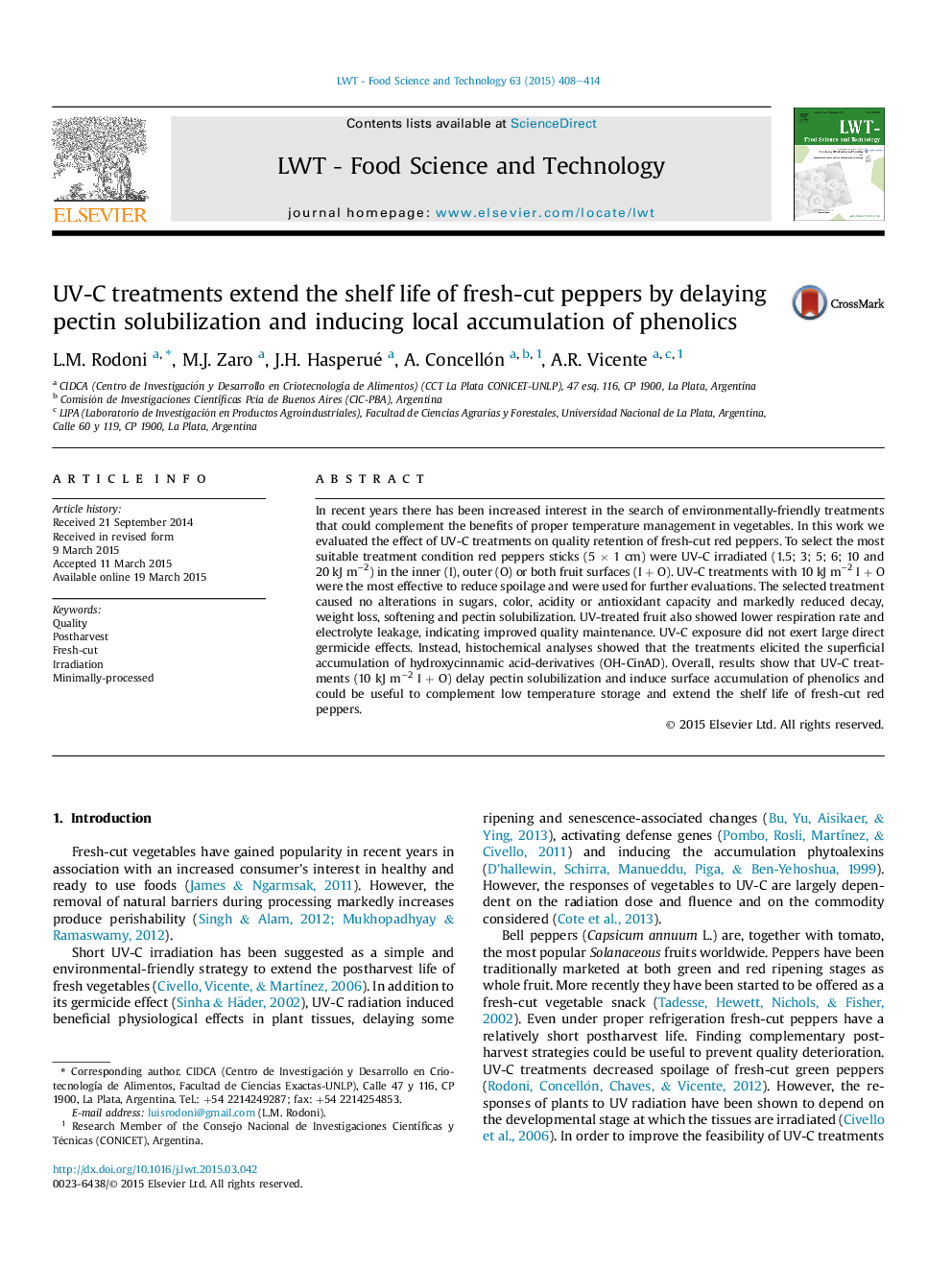| کد مقاله | کد نشریه | سال انتشار | مقاله انگلیسی | نسخه تمام متن |
|---|---|---|---|---|
| 6402089 | 1330885 | 2015 | 7 صفحه PDF | دانلود رایگان |

- UV-C treatment (10Â kJÂ mâ2 IÂ +Â O) reduced decay and softening in fresh-cut red pepper.
- UV-C radiation induced the accumulation of hydroxycinnamic acid-derivatives.
- Pectin solubilization and wall disassembly were delayed in irradiated peppers.
- UV-C may control soft rots in pepper by modulating the host susceptibility.
In recent years there has been increased interest in the search of environmentally-friendly treatments that could complement the benefits of proper temperature management in vegetables. In this work we evaluated the effect of UV-C treatments on quality retention of fresh-cut red peppers. To select the most suitable treatment condition red peppers sticks (5Â ÃÂ 1Â cm) were UV-C irradiated (1.5; 3; 5; 6; 10 and 20Â kJÂ mâ2) in the inner (I), outer (O) or both fruit surfaces (IÂ +Â O). UV-C treatments with 10Â kJÂ mâ2 IÂ +Â O were the most effective to reduce spoilage and were used for further evaluations. The selected treatment caused no alterations in sugars, color, acidity or antioxidant capacity and markedly reduced decay, weight loss, softening and pectin solubilization. UV-treated fruit also showed lower respiration rate and electrolyte leakage, indicating improved quality maintenance. UV-C exposure did not exert large direct germicide effects. Instead, histochemical analyses showed that the treatments elicited the superficial accumulation of hydroxycinnamic acid-derivatives (OH-CinAD). Overall, results show that UV-C treatments (10Â kJÂ mâ2 IÂ +Â O) delay pectin solubilization and induce surface accumulation of phenolics and could be useful to complement low temperature storage and extend the shelf life of fresh-cut red peppers.
Journal: LWT - Food Science and Technology - Volume 63, Issue 1, September 2015, Pages 408-414